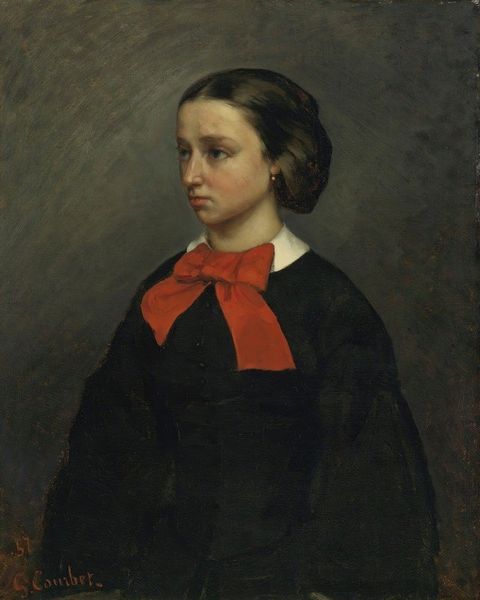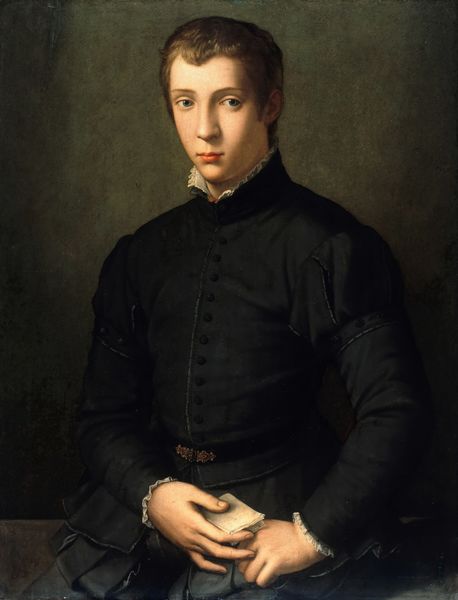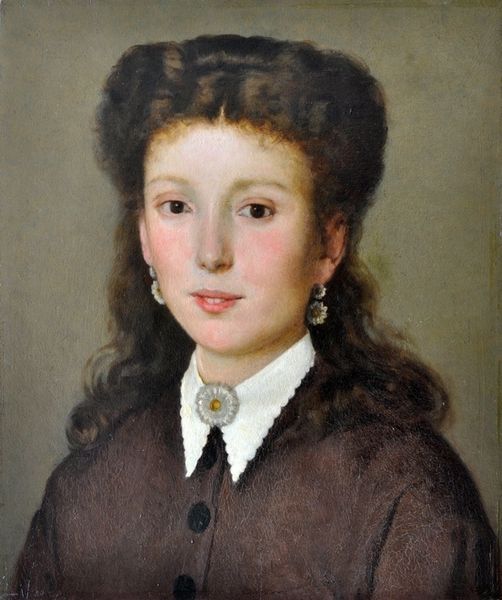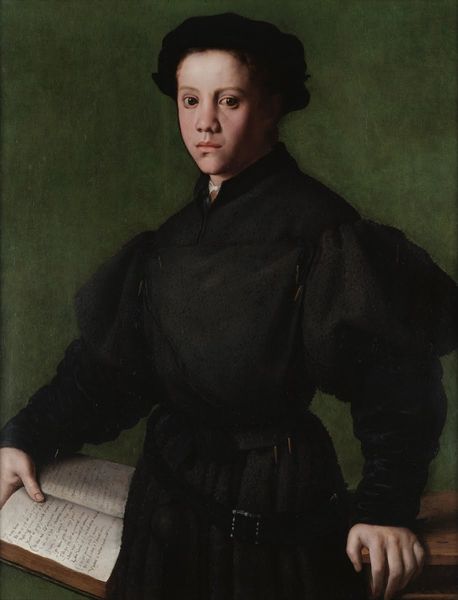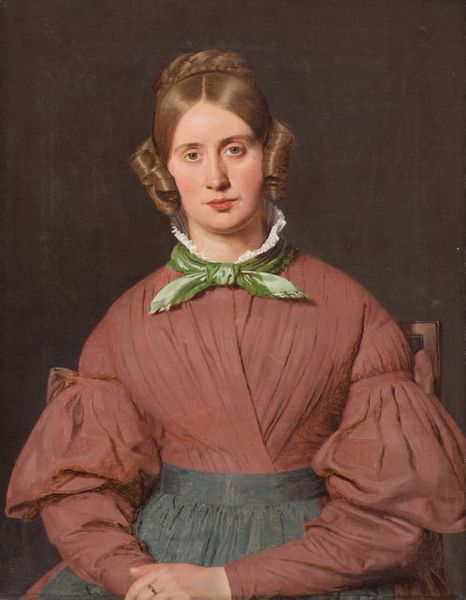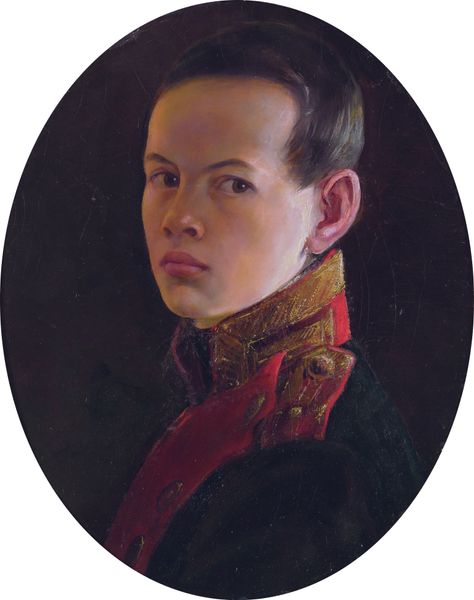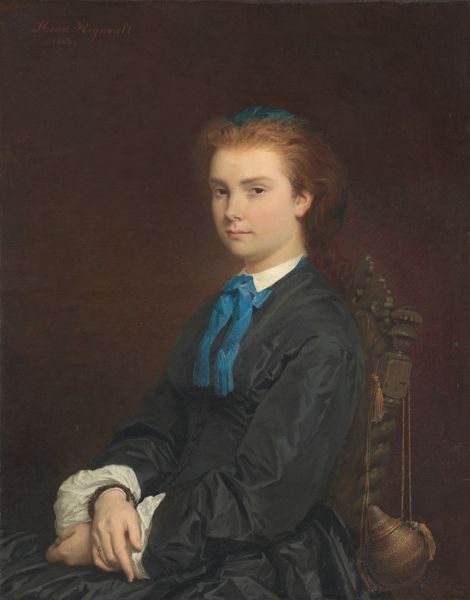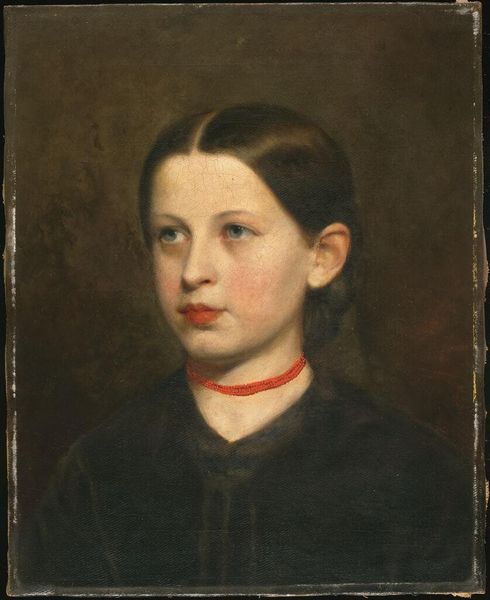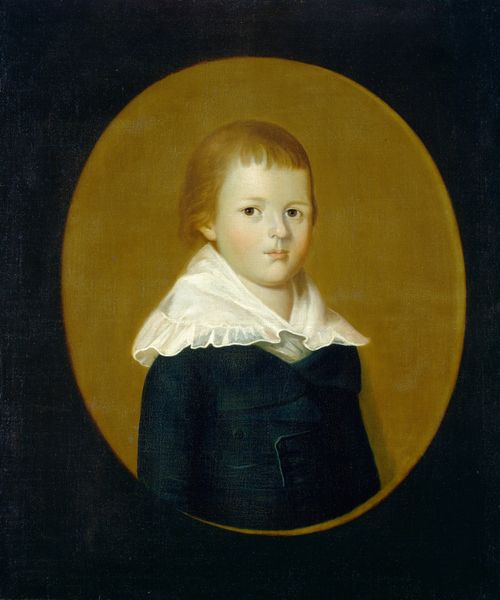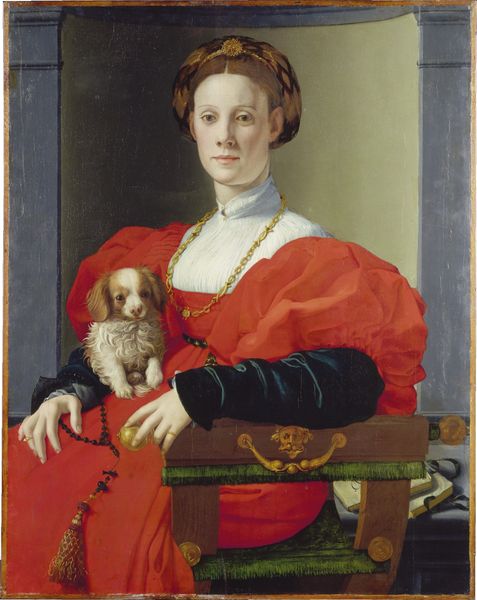
painting, oil-paint
#
portrait
#
painting
#
oil-paint
#
romanticism
#
genre-painting
#
realism
Dimensions: overall: 74.3 x 60.5 cm (29 1/4 x 23 13/16 in.) framed: 96.5 x 82.6 x 7.6 cm (38 x 32 1/2 x 3 in.)
Copyright: National Gallery of Art: CC0 1.0
Curator: Here we have Charles David’s “Portrait of a Young Horsewoman,” painted in 1839. What's your immediate impression? Editor: That velvet coat! The texture practically leaps off the canvas. And look at the way the light catches the material - the artist really wants us to know it's expensive, finely crafted. It's luxurious. Curator: Absolutely. David was known for these intimate portraits capturing members of the rising bourgeoisie in France. Notice how her clothing and riding accessories – the gloves, the riding crop – all signal status. It's a carefully constructed image of affluence. Editor: You see, that’s what grabs me – this painting isn't just *of* someone, it *is* something. This velvet probably comes from Lyon's finest workshop; it speaks to industrial connections, trade routes, and specialized labor to produce that deep crimson pile. It tells a story about the textile industry and its impact. Curator: And the portrait itself functions as a tool. A tool of social mobility! For the newly wealthy, commissioning such a portrait solidified their position and visually communicated their ascent in society. It was displayed, reproduced as engravings perhaps, becoming part of a wider visual culture reinforcing societal hierarchies. Editor: I’m struck by the contrast between the rich materials and her slightly uncomfortable posture. She isn’t totally at ease. Her world might be plush with beautiful materials, but there's also that faint disquiet about it all. A portrait can conceal, but reveal too. Curator: Yes, David captures a moment of transition, perhaps. The landscape background is deliberately vague – further emphasizing her social station, distinct from rural life. It places her within an emerging class. It’s so much more than just a likeness. Editor: The level of detail certainly is thought provoking. Each painted stitch in the gloves and every careful curl styled to perfection - that detail shows both technical skill but also reveals the cultural importance we assigned to manufactured materials and self-fashioning. Curator: David provides us with a glimpse into the values and aspirations of a particular social group in 19th-century France. The public function of an artwork like this then transcends private devotion, extending into something so politically potent. Editor: So, while seemingly straightforward, David's painting prompts a much wider reflection on the role of textiles and consumer goods within society, labor involved, but also an emerging consumer culture. Curator: Indeed, an artwork is at once document, participant, and agent within society’s broader movements.
Comments
No comments
Be the first to comment and join the conversation on the ultimate creative platform.
